Among the myriad of cacti that punctuate the vast landscapes of North America, few can captivate the heart and imagination quite like the Astrophytum coahuilense. Renowned both for its rarity and its striking aesthetic, this cactus boasts a unique silhouette adorned with intricate patterns, serving as a testament to nature’s artistry. In this article, we delve into the intricate world of Astrophytum coahuilense, exploring its characteristics, cultural significance, and the care it requires to thrive in cultivation.
Origin and Habitat: The Home of Astrophytum Coahuilense
Astrophytum coahuilense originates from the arid landscapes of northeastern Mexico, specifically the state of Coahuila. It primarily inhabits rocky, desert terrains where it thrives in poor, well-drained soils. The cactus tends to populate areas that are exposed to full sun, showcasing its remarkable adaptations to extreme climates. In its natural environment, the stark contrast of the cactus against the rugged landscape provides an enthralling visual display, revealing the cactus’s vital role in the ecosystem.
Being a member of the Cactaceae family, the Astrophytum genus is characterized by its distinctive features that set it apart from other cacti. One of the most fascinating aspects of Astrophytum coahuilense is its unique ribbed structure, which typically consists of five to seven prominent ribs. This ribbing not only enhances its aesthetic appeal but also aids in water conservation during periods of drought. Furthermore, the species showcases a variety of morphological expressions, with some individuals exhibiting a delightful coating of white flecks called “farina,” which gives it a velvety appearance.
Physical Characteristics: The Allure of Form and Texture
Visually, Astrophytum coahuilense is nothing short of extraordinary. Its globular form can grow to a height of approximately 10 to 30 centimeters, depending on environmental conditions and care. One of the key features that make it particularly intriguing is the coloration of its skin. The coloration can range from deep green to a more striking blue-green, offering a distinctive palette that changes subtly with the light. This dimension can be captivating, fostering an appreciation for the beauty that exists within unyielding environments.
The ribbing of the cactus not only serves a pragmatic purpose but also contributes to its overall visual richness. The angularity of the ribs paired with the smooth surface reflects sunlight in mesmerizing ways, creating a play of shadows and highlights that enchants observers. Some specimens may display a sinuous twist in their growth, enhancing their sculptural aesthetic. This uniqueness makes Astrophytum coahuilense a coveted specimen for collectors and enthusiasts alike, as each individual can be remarkably different from the next.
Flowers and Pollination: Nature’s Vivacious Display
In addition to its impressive physical characteristics, Astrophytum coahuilense offers a vibrant display during its flowering season. Typically, these cacti bloom in late spring to early summer, adorning themselves with breathtaking flowers that emerge from the top, creating an ethereal crown. The flowers are predominantly yellow or cream, characterized by a funnel-shaped structure that can span several centimeters in diameter. Their vivid colors stand in stark contrast to the plant’s body, further accentuating its beauty.
The blooms not only play a pivotal role in reproduction but also attract a variety of pollinators, including bees and other insects. This relationship is a vital aspect of its ecological niche, as successful pollination enhances genetic diversity and ensures the survival of the species. Observing the relationship between the cactus and its pollinators offers valuable insights into the interconnectivity of desert ecosystems, providing a glimpse into the delicate balance of life.
Conservation Status: The Ceaseless Struggle for Survival
Despite its enchanting allure, Astrophytum coahuilense faces significant threats in its natural habitat. Habitat destruction, driven by urbanization and agricultural expansion, has led to dramatic declines in wild populations. Additionally, illegal collection practices for ornamental trade have exacerbated the situation, rendering this magnificent cactus increasingly rare. Understanding these challenges is paramount for the conservation of Astrophytum coahuilense, as they highlight the need for protective measures and sustainable practices.
In response to these challenges, conservationists are working to educate local populations about the importance of preserving this unique species. Initiatives aimed at habitat restoration, along with community engagement, are vital steps toward mitigating human impact. The cactus stands as a symbol of resilience, representing a species that has adapted to thrive in harsh conditions, while simultaneously highlighting the fragile state of many desert ecosystems.
Care and Cultivation: Nurturing the Astrophytum Coahuilense
For those captivated by the charm of Astrophytum coahuilense, growing this cactus can be a rewarding experience. However, it demands careful attention to replicate its natural habitat effectively. Understanding its specific care requirements is essential for maintaining its health and vibrancy in cultivation.
Firstly, well-draining soil is non-negotiable. A cactus mix combined with coarse sand or perlite can provide the necessary aeration and drainage to prevent root rot, which is a common affliction for cacti. Moreover, watering needs must be approached conservatively. It is critical to allow the soil to dry out between watering sessions, replicating the cyclical nature of moisture availability in its desert home. During the growing season, a balanced fertilizer can be applied sparingly to promote healthy growth and flowering.
Light exposure is another vital factor in the successful cultivation of Astrophytum coahuilense. This cactus craves full sunlight for a significant portion of the day. As such, providing a south- or west-facing window or a dedicated growing area with bright light conditions can encourage robust growth. However, caution should be exercised when transitioning indoor plants to outdoor conditions, as direct sunlight can scorch the skin if they are not acclimatized gradually.
Lastly, dormant periods must be respected. During the winter months, Astrophytum coahuilense benefits from reduced watering and lower temperatures. This hibernation period allows the plant to conserve energy, preparing it for the burst of growth that comes with the warmth of spring.
Conclusion: A Celebration of Natural Beauty
In conclusion, the Astrophytum coahuilense stands as a beacon of the beauty and resilience found within the desert’s arid embrace. Its unique characteristics, from its architectural form to its vibrant blossoms, captivate all who lay eyes upon it. As a symbol of ecological harmony, the continued survival of this rare cactus is intertwined with the appreciation and conservation of its natural habitat. For those who cultivate it, Astrophytum coahuilense offers a rewarding and enriching experience that celebrates the intricacies of nature.
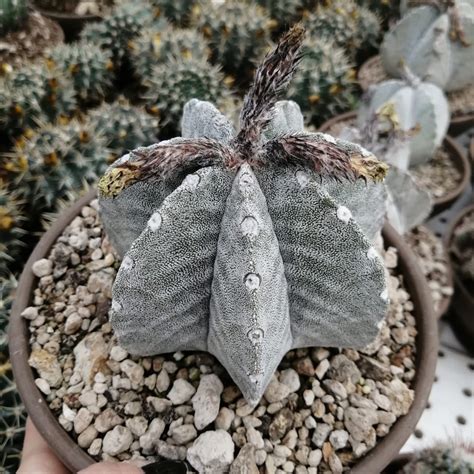
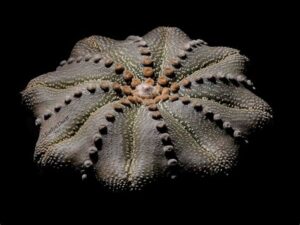
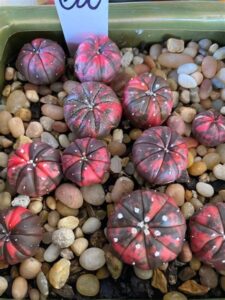
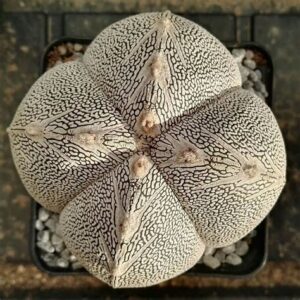
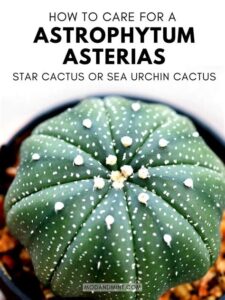
Leave a Comment